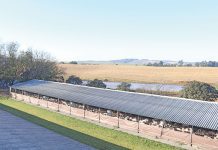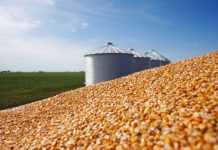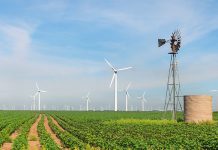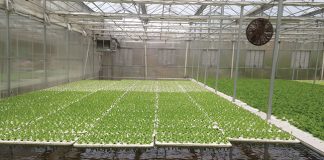The doom and gloom surrounding climate change, coupled with South Africa’s current drought, are ensuring that energy efficiency commands increasing attention. On many farms, the electricity bill has two basic components:
- The consumption charge;
- A demand (kVA) or connection change.
The latter is determined by the size of the transformer or the capacity of the line. This in turn relates to the rate at which you use electricity – in other words, how many pieces of electrical equipment are running simultaneously. This is a fixed charge – it stays the same regardless of how much or how little power you are using.
Some utilities now allow these charges to be reduced if the customer can prove that the demand is much lower than what is being billed. This is easy to do if smart meter data is used. It is important to design your systems and select your electrical equipment to suit your requirements. Consider the pump affinity laws shown above.
If pump speed n1 is reduced to n2, the resultant flow rate would reduce Q1 to Q2. Therefore, slowing the pump down by 10% will reduce the flow by 10%. However, because pressure is a quadratic function of the pump speed, when the pump is slowed down by 10%, the head pressure is reduced by 20%. Similarly, when the pump speed is slowed down by 10%, the pump power is reduced by 30%.
The high cost of extra power
Sometimes, we are the victims of our own success. Consider a new operation with recently installed irrigation. At this early stage, the 100mm header pipe may be considerably oversized. As the operation expands, a bigger pump or faster motor may be required. In many such cases, the existing 100mm header is not upgraded.
Let us say that the old motor had a rated speed of 1 150rpm and a new motor operates at 1 750rpm. Using the formulae above, we can see that the flow increases by 50%, while the pressure increases by 100%, which is the desired effect. However, the power requirement for this upgraded motor is 150% more! This will have a significant effect on both the demand (or connection) charge and consumption. Yet it can be avoided.
How to improve your system
From the above, it can be seen that upgrading an irrigation system, or any pumping system for that matter, is not simple. The correct approach is to consider the following options and select the most economically feasible for your operation:
- Keep the existing pump motor, but increase the header size. This will reduce the pressure requirements and increase the flow.
- Upgrade to a parallel pump arrangement. The increase in power will only be 100%, not 150%. However, the flow will increase by only 66%.
- Consider an additional header pipe, with its own pump.
If you have an existing oversized pump, the following remedial actions are possible:
- Install a variable speed drive (VSD): This will allow you to adjust the pump speed to the actual requirements. A VSD can be controlled manually, or automatically when combined with pressure sensors or flow meters.
- Skim the impeller: Most impellers can be skimmed to match the flow requirements. Check the manufacturer’s recommendations.
Some pumping systems are equipped with pressure-reducing valves (PRVs) to get rid of excess head. In other instances, a normal gate or globe valve is installed, and closed to restrict the flow.
This, however, is a cheap and nasty solution and a waste of energy: the PRV burns excess energy and the affinity laws show that this could result in a very expensive means to reduce flow. The affinity laws apply to fans too. Flow control dampers, dirty filters and oversized fan systems lead to the same inefficiencies.
To keep it efficient, keep it clean
The affinity laws also illustrate the importance of regular maintenance. A dirty strainer can increase the system head loss significantly. It can also either reduce your flow and resultant irrigation efficiency, or increase your power consumption, or both.













